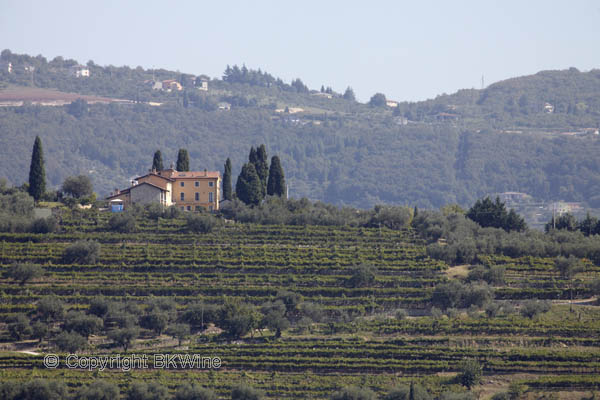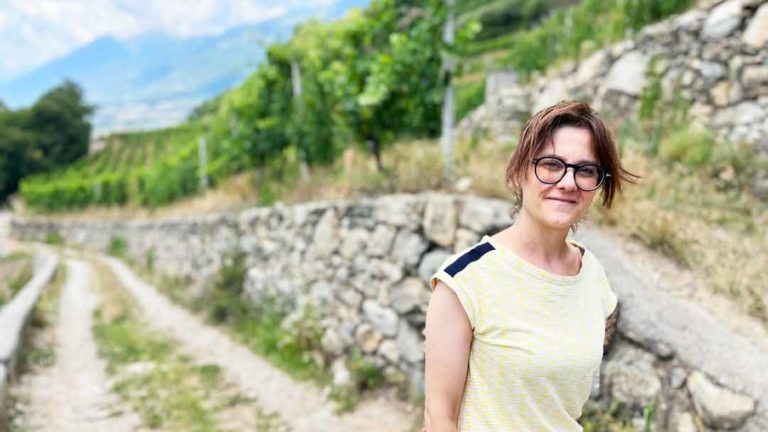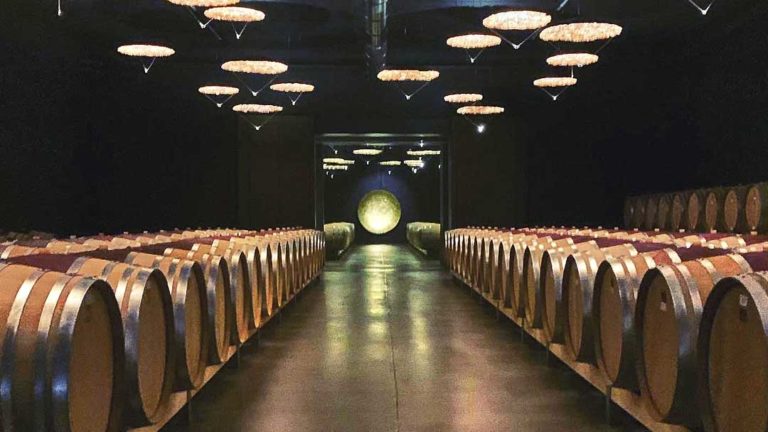Allegrini has recently been nominated for “Best Winery” in Italy by Gambero Rosso. Of course there is an element of luck in this. Is it the luck that a talented and hardworking winemaking family deserves?
Marilisa Allegrini and her brother Franco is the sixth generation, but it is their father Giovanni who laid the foundation for the winery. He bought land in Veneto when it was cheap. It was land on the slopes and he was determined to make good wine from the local grapes. Nowadays, the land is more expensive, not least thanks to the amarone boom in recent years.
In 1963 the permitted grapes in Valpolicella DOC were Corvina, Rondinella, Molinara and oseleta. In 2003 Molinara became optional, having previously been mandatory. Giovanni managed to buy the finest vineyard land in the whole of Veneto, the La Grola Hill. He replanted it with approximately 1100 vines / ha of corvina, which was much denser than before but still a compromise as corvina grows faster than other international grape varieties.
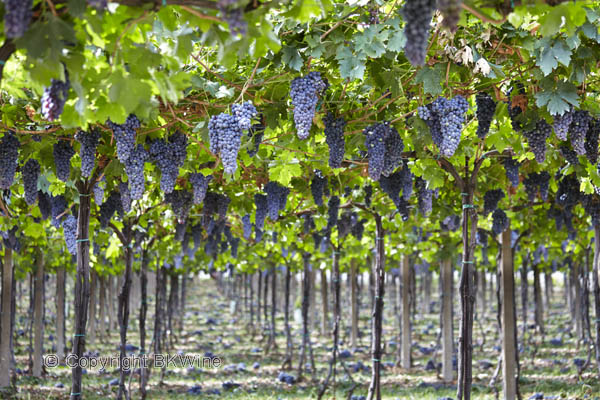
Moreover, the vines were trained with double Guyot, which is standard in eg Bordeaux. Traditionally, in Veneto they used the pergola system and had high harvest yields which gives simpler wines. Denser planting and training the vine closer to the ground gave a better phenolic ripeness of the grapes. Grape with better phenolic ripening makes it possible to produce wines of higher quality.
When a winemaker colleague saw all the novelties he asked: “Are you growing lettuce, Giovanni?” Things have changed since then, now about 50% of the vineyards are managed in the same way.
The soil on the La Grola hill consists mainly of well-drained calcareous soils. The mere 2.75 ha large La Poja part of the hill has a higher calcium content, and biggish white stones hold the heat longer. The La Poja portion of the land contains free lime, just below the limit of what a vine can tolerate. The grapevines roots go down about 5 m in the ground. They are harvested late with well-ripened grapes.
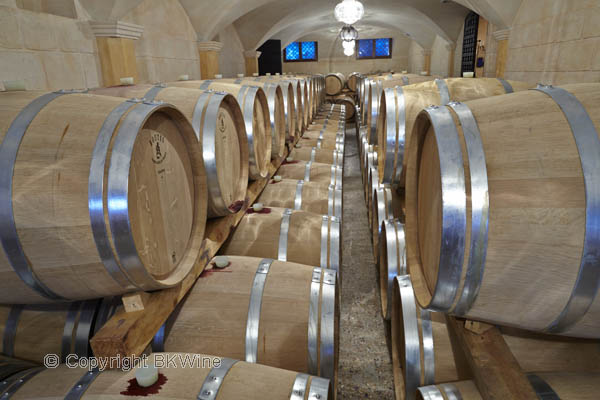
The grapes are a special clone of Corvina called corvina gentile or locally corvina Graspo Rosso. It gives the most colourful juice of all corvina clones. The first harvest of La Poja was in 1983, shortly after Giovanni passed away.
Marilisa says with great pride that La Poja is a wine made in the vineyard, while amarone is a wine that is made in the wine cellar, through partly drying the grapes. Since La Poja consists of 100% corvina the wine is just in the IGT classification. The limit for a Valpolicella is maximum of 95%.
One of the major trends in the wine world is a more prudent use of oak. It provides cleaner fruit and even La Poja is nowadays aged in barrels of double barrique-size called tonneaux.

The vertical tasting included the following wines:
La Poja IGT 2010
~48 euro (price estimates based on Swedish retail prices and may not correspond to current international market prices)
Very intense cherry aroma, still closed nose with good acidity and concentration.
La Poja IGT 2009
~50 euro
Dark red with aromas of dried nettle and cherry caramel, good acidity and concentration, more developed than the 2010. Both vintages are aged in tonneau.
La Poja IGT 2006
~155 euro
Dark red with intense aromas of vanilla, caramel, herbs, black currants and the one that was most like a sangiovese of all wines. Softer tannins, lower acidity and some volatility. Not as balanced, but should benefit from ageing. From this vintage and earlier, all the wines are aged in barrique-barrels.
La Poja IGT 2004
300 euro
Deep dark red with complex aromas of cherries, green herbs and a peppery tone. Good acidity and solid tannins, more closed than the 2001. Best wine today.
La Poja IGT 2001
~390 euro
Is considered as a weak vintage compared to 2000. Dark brick-red colour with concentrated cherry nose, some stalk and balsamic tones. Fresh acidity in a balanced and powerful wine.
La Poja is definitely one of Europe’s great wines, and each wine is good in itself, even if a vertical tasting shows greater differences than one might expect. No matter which vintage you think of it is possible to drink when released but also possible to age it an additional 5-15 years.
Just this small amount of luck and this much talented and hard work over a long time is what it takes to become “Vineyard of the Year” in Italy.
Mikael Karlin writes för BKWine Magazine on wine tastings and wine events in Sweden.
[box type=”info” style=”rounded” border=”full”]Veneto is one of Italy’s most prominent wine regions, close to Verona. If you really want to discover Veneto, with Valpolicella and amarone, come on a wine tour with BKWine.
Travel to the world’s wine regions with the experts on wine and the specialist on wine tours.
Wine tours that give you a unique wine experience. BKWine’s wine tours.[/box]
